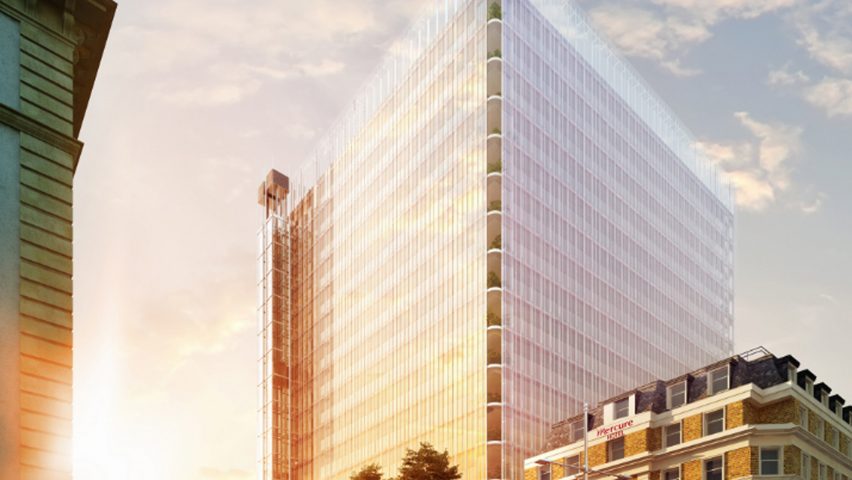UK secretary of state Sajid Javid has halted the planning application for Renzo Piano's contentious Paddington Cube in London, as he considers whether to call for a public inquiry.
Javid – the secretary of state for communities and local government – issued Westminster City Council with an Article 31 direction to stall the planning application of Renzo Piano's 18-storey tower.
The direction will allow Javid more time to consider whether the controversial building should undergo a independent public inquiry.
"In exercise of his powers under Article 31 of the Town and Country Planning (Development Management Procedure) (England) Order 2015, the secretary of state hereby directs your Council not to grant permission on these applications without specific authorisation," reads the letter sent to the council on Javid's behalf.
"This direction is issued to enable him to consider whether he should direct under Section 77 of the Town and Country Planning Act 1990 that the applications should be referred to him for determination," it continues.
Piano's £775 million scheme, dubbed the Paddington Cube, was granted planning permission subject to approval by the secretary of state by the council in December 2016.
"The council has received notice of the Article 31 direction, and will now await a decision from the secretary of state," Westminster City Council Councillor Daniel Astaire told Dezeen.
Javid's decision to issue the Article 31 direction follows significant and ongoing opposition to Piano's scheme.
The 72-storey tower originally proposed by the Paris-based architect provoked such a strong outcry over its height that he was forced to scrap his design just four months after it was unveiled.
Piano slashed 54 storeys from his proposed Paddington Pole skyscraper to create the Paddington Cube, but heritage bodies have continued to lobby to have the plans overturned.
SAVE Britain's Heritage launched a petition calling for Javid to launch a public inquiry into the revised plans and attracted over 1,000 signatures.
The organisation, alongside others including the Skyline Campaign and Historic England, claim Renzo's "floating" glass cube will negatively impact the conservation area surrounding London's Paddington station.
Clearance of the proposed site would see the demolition of the Baroque Edwardian former Royal Mail sorting office.
"The massive scale of this square office tower would be a blot on the capital – substantially imposing itself over its immediate neighbours – including Isambard Kingdom Brunel's Grade-I listed Paddington Station," says SAVE's petition.
"Conservation area status should offer protection against such harmful development," it continues. "This proposal sets a dangerous precedent – and sends out the message that London is trashing its conservation areas."
The scheme was backed by developer Irvine Sellar, who died aged 82 last weekend. Sellar was also the developer of The Shard, which at 309 metres tall is London's tallest skyscraper.
Paddington Cube is one of several hundred new towers in the pipeline for London that have attracted considerable criticism, with the city's residents calling for height caps and no-build zones.
British artist Antony Gormley voiced his concerns over the number of skyscrapers being erected in the Square Mile, claiming their design is based on "maximum return on minimum investment" and offers inadequate public space.
"The committee, as they always would, listened carefully to objectors concerns before making their decision," Astaire told Dezeen.
"The committee members considered the scheme’s impact very carefully, but concluded the substantial social, economic and regeneration benefits coupled with the substantial public benefits outweighs the less than substantial harm to the heritage assets, and this view is also supported by the mayor of London."
Renzo Piano came in at 22 in Dezeen's Hot List ranking, a guide to the most newsworthy and searched-for players in the design world in 2016.
Recent projects by his firm Renzo Piano Building Workshop include a "palace of light" for Columbia University medical researchers and the 30-storey Soho Tower in New York.

